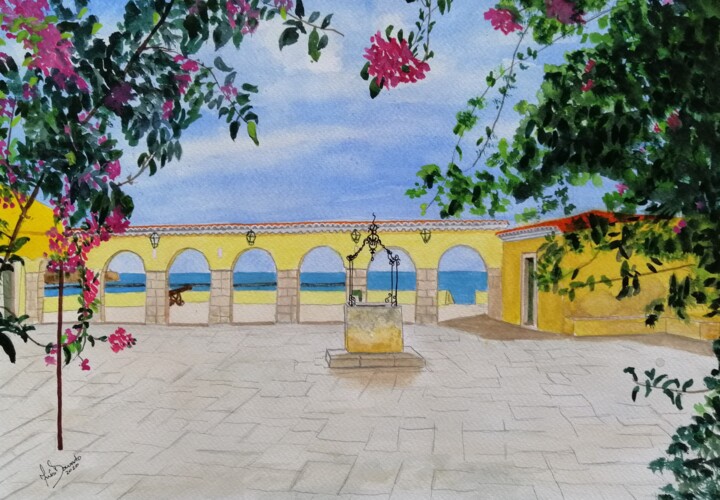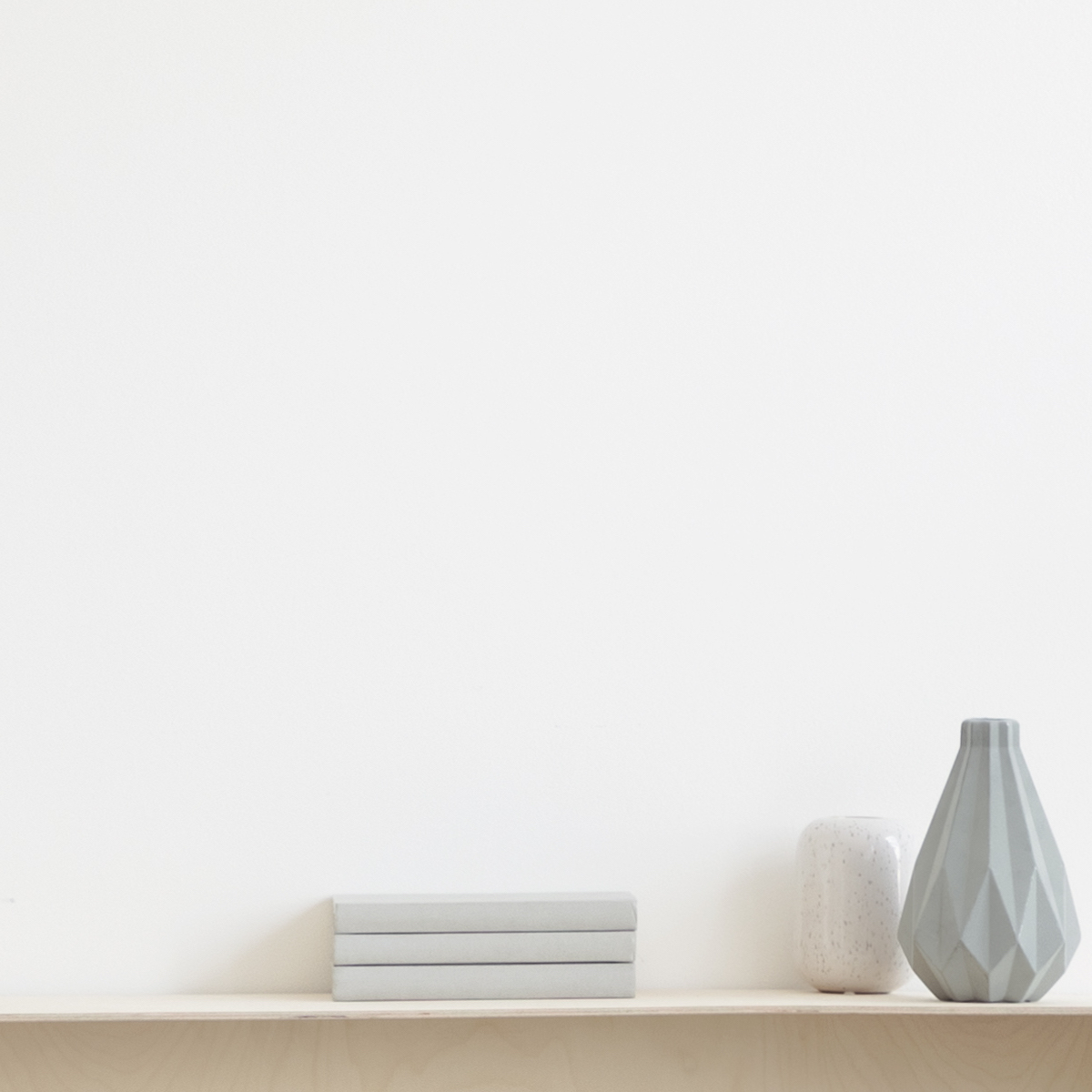


Lassen Sie uns wissen, wenn Sie mehr Fotos von diesem Kunstwerk sehen möchten!
- Rückseite der Arbeit / Seite der Arbeit
- Einzelheiten / Unterschrift / Oberfläche oder Textur des Kunstwerks
- Kunstwerk in Situation, Andere...
Olhando o Mar (Forte de Sta.Catarina,Portimão,Portugal) (2020) Malerei von Inês Dourado
Mehr Infos
- Verpackung (Briefumschlag) Alle Kunstwerke werden mit einem Premium-Carrier geliefert, sorgfältig geschützt und versichert.
- Kundendienst Auftragsverfolgung bis zur Zustellung des Pakets an den Käufer. Eine Tracking Nummer wird zur Verfügung gestellt, damit Sie das Paket in Echtzeit verfolgen können.
- Fristen Weltweite Lieferung in 3 bis 7 Tagen (Schätzen)
- Zoll nicht inbegriffen Der Preis beinhaltet keine Zollgebühren. Die meisten Länder haben keine Einfuhrsteuer für Originalkunstwerke, aber Sie müssen möglicherweise die reduzierte Mehrwertsteuer zahlen. Zollgebühren (sofern anfallend) sind bei der Ankunft vom Zollamt zu berechnen und werden vom Spediteur separat in Rechnung gestellt.
Mehr Infos
- Verfolgbares Online-Echtheitszertifikat Echtheitszertifikate können jederzeit online überprüft werden, indem der Code des Kunstwerks gescannt wird.
- Künstlerwert-Zertifizierung Experten untersuchen das Werk und den Werdegang eines Künstlers und ermitteln dann einen unabhängigen und zuverlässigen Durchschnittspreis. Der durchschnittliche Preiswert ordnet den Künstler in einer Preisspanne für einen bestimmten Zeitraum ein. Die Sachverständigen können auch gebeten werden, einen genaueren Schätzwert für ein bestimmtes Werk zu ermitteln.
Mehr Infos
100% sichere Zahlung mit SSL-Zertifikat + 3D Secure.
Mehr Infos
-
Original-Kunstwerk (One Of A Kind)
Malerei,
Aquarell
auf Papier
- Masse Höhe 11,4in, Breite 15,4in
- Zustand des Kunstwerks Das Kunstwerk ist in einwandfreiem Zustand
- Rahmen Dieses Kunstwerk ist nicht gerahmt
- Kategorien Gemälde unter 1.000 $ Figurative Landschaft
Looking at the sea, Portimão, Algarve, South of Portugal
Watercolor on Fabriano paper 300g)
Alguma informação - Some information
Nesta pintura represento parte do interior do Forte de Santa Catarina, na Praia da Rocha, Portimão (Algarve, sul de Portugal).
São muito discutidas as origens do forte de Santa Catarina. Alguns autores apontam uma origem quinhentista, durante o reinado de D. Sebastião, mas nenhuma prova foi, até ao momento, identificada.
Em 1621, em pleno domínio espanhol, Alexandre Massai, à frente de uma comitiva de uma dezena de especialistas, percorreu a foz do rio Arade. Pretendia-se encontrar o melhor local para edificar uma fortaleza que pudesse defender a barra do mais importante rio do Sul do território, uma vez que os velhos castelos medievais (de Ferragudo e de Portimão) se encontravam já desajustados em relação às exigências de uma defesa activa contra piratas, corsários e invasões marítimas. Esse local haveria de ser a ponta da Praia da Rocha (ou Ponta de Santa Catarina, dado que aí existia uma ermida posteriormente integrada na fortaleza, e que ainda hoje existe, apesar de substancialmente transformada), no extremo Sul do território de Portimão, e sobre uma falésia disposta em cunha sobre o mar. Vários argumentos foram invocados para esta localização, em detrimento de uma fortaleza mais interior, situada preferencialmente em Ferragudo: as melhores condições do relevo; a maior facilidade de abastecimento de água e, especialmente, a privilegiada ligação a Portimão, determinaram esta escolha (COUTINHO, 1997, p.124).
Nesse ano de 1621, Massai desenhou três propostas para a fortificação, todas concordando com a existência de uma ampla fachada, a Norte, que ficaria a servir de fachada principal ao edifício (COUTINHO coord., 2001, p.134, onde se publicam as respectivas propostas). A obra, propriamente dita, iniciou-se, apenas, oito anos mais tarde, em 1629, e estava terminada em 1633, o que indica uma edificação relativamente rápida. Infelizmente, as muitas alterações por que o edifício passou, nos séculos seguintes, fez com que toda a configuração original do interior fosse suprimida. Do projecto do século XVII, resta apenas a fachada principal, organizada em três panos simétricos, sendo o central - onde se abre a porta principal - ligeiramente recuado. Esta, de perfil recto, possui grossas pilastras e lintel compostos por pedras almofadadas, que conferem uma certa monumentalidade à entrada e que contrasta com a dominante horizontal, e relativamente baixa, de toda a fachada. Ainda desse projecto filipino fazia parte um fosso, que antecedia a entrada e uma ponte levadiça, elementos de que hoje nenhum vestígio resta.
O terramoto de 1755 danificou a fortaleza. As obras de reconstrução desenvolveram-se em duas fases fundamentais: nos anos imediatos, deram-se as reparações imprescindíveis; na década de 90, as restantes (VENTURA e MAIA, 1993, p.41). Contudo, a profunda remodelação deste espaço aconteceu já no século XX, no âmbito do desenvolvimento turístico do Barlavento. O interior foi repartido entre um posto da Guarda Fiscal e da Capitania do Porto de Portimão (que patrocinaram a construção de novos edifícios) e um miradouro. Este último, data da década de 60 e foi ocupar a zona onde originalmente se encontravam as baterias de combate, viradas ao mar e no extremo Sudeste do conjunto. Nestas obras, parte do penedo sobre o qual se encontra a fortaleza foi reforçado com construção moderna, o que permitiu uma ampliação da área de miradouro. Paralelamente, o progressivo assoreamento da barra e o consequente aumento do areal, permitiu o aproveitamento de toda a estrutura como ponto de apoio à praia da Rocha, razão da existência de um restaurante e esplanada recentes.
Uma das últimas construções militares filipinas em território algarvio, erguida com a preocupação de defender as costas da Península, por diversas vezes assoladas por armadas de corsários e de exércitos inimigos, a fortaleza de Santa Catarina é um dos fortes que melhor ilustra a acção de Alexandre Massai, engenheiro militar que viajou pelo Algarve, entre 1617 e 1621, e de cujo périplo resultou uma Descrição do Reino do Algarve e numerosos projectos de fortificações costeiras.
(Cf. www(dot)patrimoniocultural(dot)gov(dot)pt
In this painting I represent part of the interior of the Fort of Santa Catarina, at Praia da Rocha, Portimão (Algarve, south of Portugal).
In 1621, in full Spanish domination, Alexandre Massai, at the head of a group of a dozen specialists, crossed the mouth of the Arade River. It was intended to find the best place to build a fortress that could defend the bar of the most important river in the south of the territory, since the old medieval castles (Ferragudo and Portimão) were already out of step with the demands of a defense active against pirates, privateers and maritime invasions. This place would be the tip of Praia da Rocha (or Ponta de Santa Catarina, since there was a chapel later integrated into the fortress, and which still exists today, despite being substantially transformed), in the extreme south of the territory of Portimão, and on a cliff wedge over the sea. Several arguments were invoked for this location, to the detriment of a more inland fortress, preferably located in Ferragudo: the best relief conditions; the greater ease of water supply and, especially, the privileged connection to Portimão, determined this choice (COUTINHO, 1997, p.124).
In that year of 1621, Massai designed three proposals for the fortification, all agreeing with the existence of a wide facade, to the North, which would serve as the main facade of the building (COUTINHO coord., 2001, p.134, where the respective proposals). The work itself started only eight years later, in 1629, and was completed in 1633, which indicates a relatively fast construction. Unfortunately, the many changes that the building underwent in the following centuries caused the entire original configuration of the interior to be suppressed. From the 17th century project, only the main façade remains, organized in three symmetrical panels, the central one - where the main door opens - slightly recessed. This one, with a straight profile, has thick pilasters and lintels composed of cushioned stones, which give a certain monumentality to the entrance and which contrasts with the horizontal dominance, and relatively low, of the entire facade. Also part of that Philippine project was a moat, which preceded the entrance and a drawbridge, elements of which today no trace remains.
The 1755 earthquake damaged the fortress. The reconstruction works were carried out in two fundamental phases: in the immediate years, the necessary repairs took place; in the 90s, the rest (VENTURA and MAIA, 1993, p.41). However, the profound remodeling of this space took place in the 20th century, in the context of the Barlavento tourist development. The interior was divided between a post of the Fiscal Guard and the Port Authority of Portimão (which sponsored the construction of new buildings) and a viewpoint. The latter, dating from the 60s and went to occupy the area where the combat batteries were originally, facing the sea and in the extreme south-east of the complex. In these works, part of the boulder on which the fortress is located was reinforced with modern construction, which allowed an extension of the viewpoint area. At the same time, the progressive silting up of the bar and the consequent increase in sand, allowed the use of the entire structure as a support point for Praia da Rocha, which is the reason for the existence of a recent restaurant and terrace.
One of the last Philippine military constructions in the Algarve, built with the concern of defending the coasts of the Peninsula, which were often devastated by corsaires and enemy armies, the fortress of Santa Catarina is one of the forts that best illustrates Alexandre's action. Massai, military engineer who traveled through the Algarve, between 1617 and 1621, and whose journey resulted in a Description of the Kingdom of the Algarve and numerous coastal fortification projects.
Verwandte Themen
Inês Dourado ist eine zeitgenössische, preisgekrönte portugiesische Malerin. In Dourados Gemälden findet man die poetische Essenz geschäftiger Stadtlandschaften und Tage voller Licht und Schatten. Mit einer Vielzahl von Medien wie Acryl, Öl, Aquarell, Gelstift und Tempera fertigt sie gekonnt figurative Stadtlandschaften auf Papier und Leinwand.
Inês Dourado wurde 1958 in Portugal geboren. Sie hat einen Abschluss in Kunstgeschichte und einen Master in Geschichte der zeitgenössischen Kunst von der Fakultät für Sozial- und Humanwissenschaften. Dourado stellte ihre Werke in Portugal, Spanien und Argentinien aus und ihre Werke befinden sich in Privatsammlungen in Deutschland, Spanien, der Schweiz, Frankreich, Brasilien, China, Australien und den USA.
-
Nationalität:
PORTUGAL

- Geburtsdatum : 1958
- Künstlerische Domänen:
- Gruppen: Zeitgenössische Portugiesische Künstler







